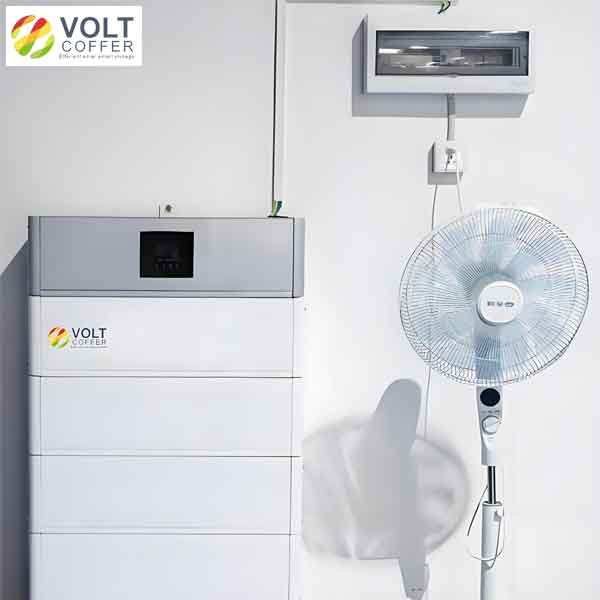The field of material science is at the forefront of driving innovations in solar battery efficiency. As the demand for renewable energy sources continues to grow, advancements in materials are crucial for enhancing the performance, durability, and cost-effectiveness of solar batteries. This article explores the key material science innovations that are revolutionizing solar battery technology, making it more efficient and accessible.
Introduction to Solar Battery Efficiency

Solar battery efficiency refers to the ability of a battery to store and deliver energy generated from solar panels with minimal loss. High efficiency is critical for maximizing the utility of solar power systems, reducing costs, and ensuring a reliable energy supply. Material science plays a pivotal role in achieving these goals by developing new materials and improving existing ones.
Advanced Lithium-Ion Batteries
Lithium-ion batteries are currently the most widely used type of solar battery due to their high energy density and long cycle life. Material science innovations have significantly improved the performance of lithium-ion batteries.
- High-Energy Cathode Materials: The development of high-energy cathode materials such as lithium nickel manganese cobalt oxide (NMC) and lithium nickel cobalt aluminum oxide (NCA) has increased the energy density of lithium-ion batteries.
- Advanced Anode Materials: Innovations in anode materials, including the use of silicon and graphene, have enhanced the storage capacity and cycling stability of lithium-ion batteries.
Table 1: Innovations in Lithium-Ion Battery Materials
| Component | Innovative Material | Benefit |
|---|---|---|
| Cathode | Lithium Nickel Manganese Cobalt Oxide (NMC) | Higher energy density |
| Anode | Silicon, Graphene | Increased storage capacity and stability |
Solid-State Batteries
Solid-state batteries represent a significant leap in solar battery technology, offering higher energy density and improved safety compared to traditional lithium-ion batteries. These batteries use a solid electrolyte instead of a liquid one, which brings several advantages.
- Solid Electrolytes: Materials such as lithium garnets and sulfide-based electrolytes have shown promise in enhancing the ionic conductivity and stability of solid-state batteries.
- Dendrite Prevention: Solid electrolytes help prevent the formation of dendrites, which can cause short circuits and reduce battery lifespan.
Table 2: Benefits of Solid-State Batteries
| Feature | Benefit |
|---|---|
| Solid Electrolytes | Enhanced ionic conductivity and stability |
| Dendrite Prevention | Increased safety and longer lifespan |
Perovskite Materials
Perovskite materials have emerged as a game-changer in the field of solar energy, showing exceptional potential in both solar cells and solar batteries.
- High Efficiency: Perovskite solar cells have achieved remarkable efficiencies, and their integration with solar batteries could further enhance overall system performance.
- Low Cost: Perovskites are relatively inexpensive to produce, making them a cost-effective option for solar battery applications.
List of Benefits of Perovskite Materials in Solar Batteries
- High efficiency in energy conversion and storage.
- Low production costs.
- Flexibility in design and application.
Graphene and Carbon Nanotubes
Graphene and carbon nanotubes are materials known for their exceptional electrical conductivity, mechanical strength, and flexibility. These properties make them ideal for use in solar batteries.
- Enhanced Conductivity: Graphene and carbon nanotubes can significantly improve the electrical conductivity of battery electrodes, leading to higher efficiency.
- Structural Integrity: These materials enhance the structural integrity of batteries, allowing for flexible and lightweight designs.
Innovations in Battery Recycling
Material science is also driving innovations in battery recycling, which is crucial for the sustainability of solar battery technology.
- Recyclable Materials: Developing materials that can be easily recycled without losing performance is a major focus. This includes innovations in electrode and electrolyte materials.
- Efficient Recycling Processes: Advances in recycling processes, such as hydrometallurgical and pyrometallurgical methods, are improving the efficiency and cost-effectiveness of battery recycling.
Table 3: Innovations in Solar Battery Recycling
| Innovation | Benefit |
|---|---|
| Recyclable Materials | Enhanced sustainability and reduced waste |
| Advanced Recycling Processes | Improved efficiency and cost-effectiveness |
Future Prospects and Emerging Technologies
The future of solar battery efficiency is bright, with several emerging technologies poised to make significant impacts.
- Metal-Air Batteries: Metal-air batteries, particularly lithium-air and zinc-air batteries, offer high energy densities and are being actively researched for solar applications.
- Quantum Dot Solar Batteries: Quantum dots have the potential to revolutionize solar batteries by providing superior light absorption and energy conversion efficiencies.
List of Emerging Solar Battery Technologies
- Metal-Air Batteries: High energy density and potential for long-duration storage.
- Quantum Dot Solar Batteries: Superior light absorption and efficiency.
Conclusion
Material science innovations are at the heart of driving solar battery efficiency, enabling the development of more efficient, durable, and cost-effective energy storage solutions. From advanced lithium-ion and solid-state batteries to the promising potentials of perovskites, graphene, and emerging technologies, the advancements in materials are paving the way for a sustainable and energy-efficient future. As research and development continue, the impact of these innovations will become even more pronounced, further cementing the role of solar batteries in the global transition to renewable energy.
